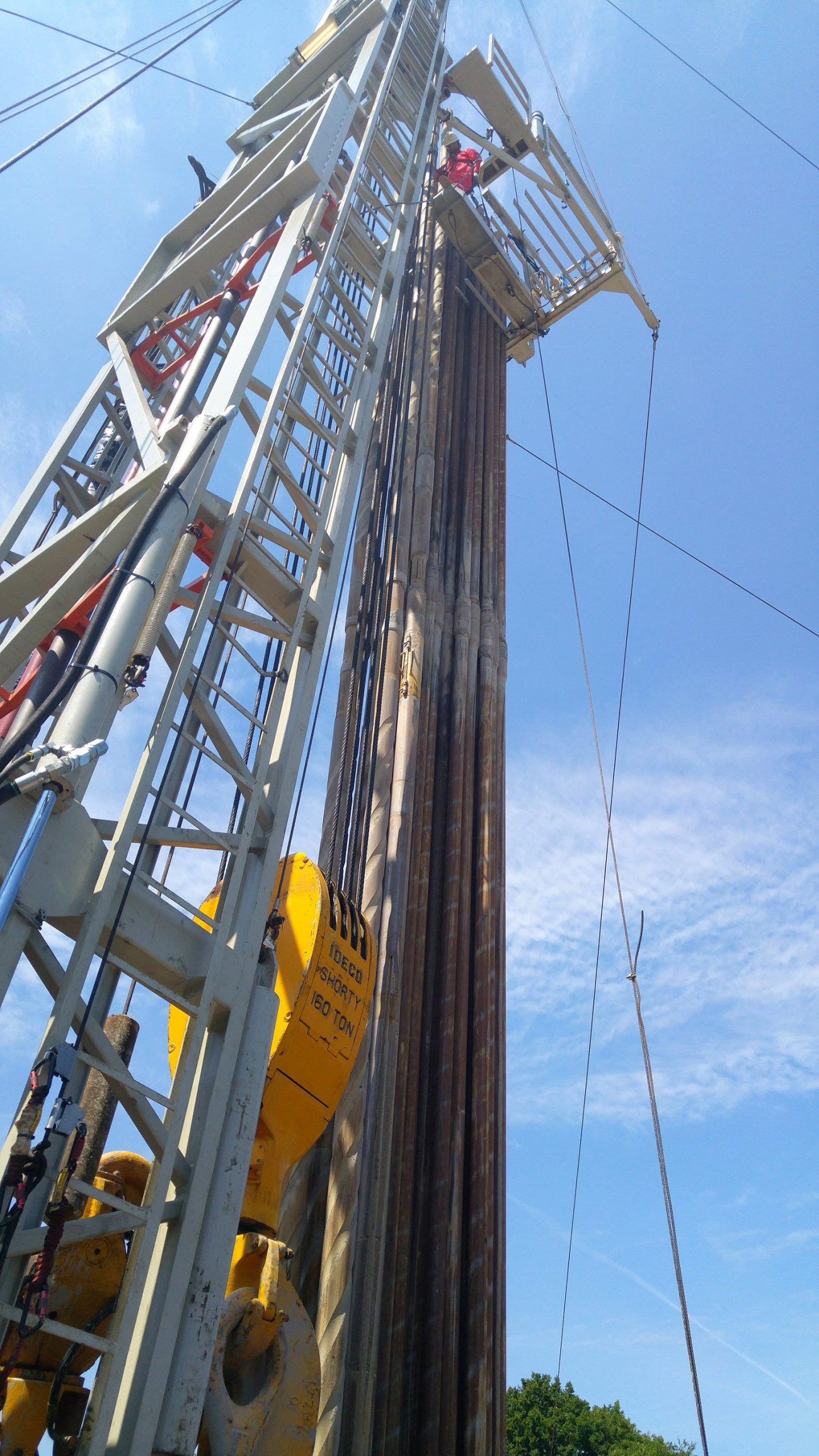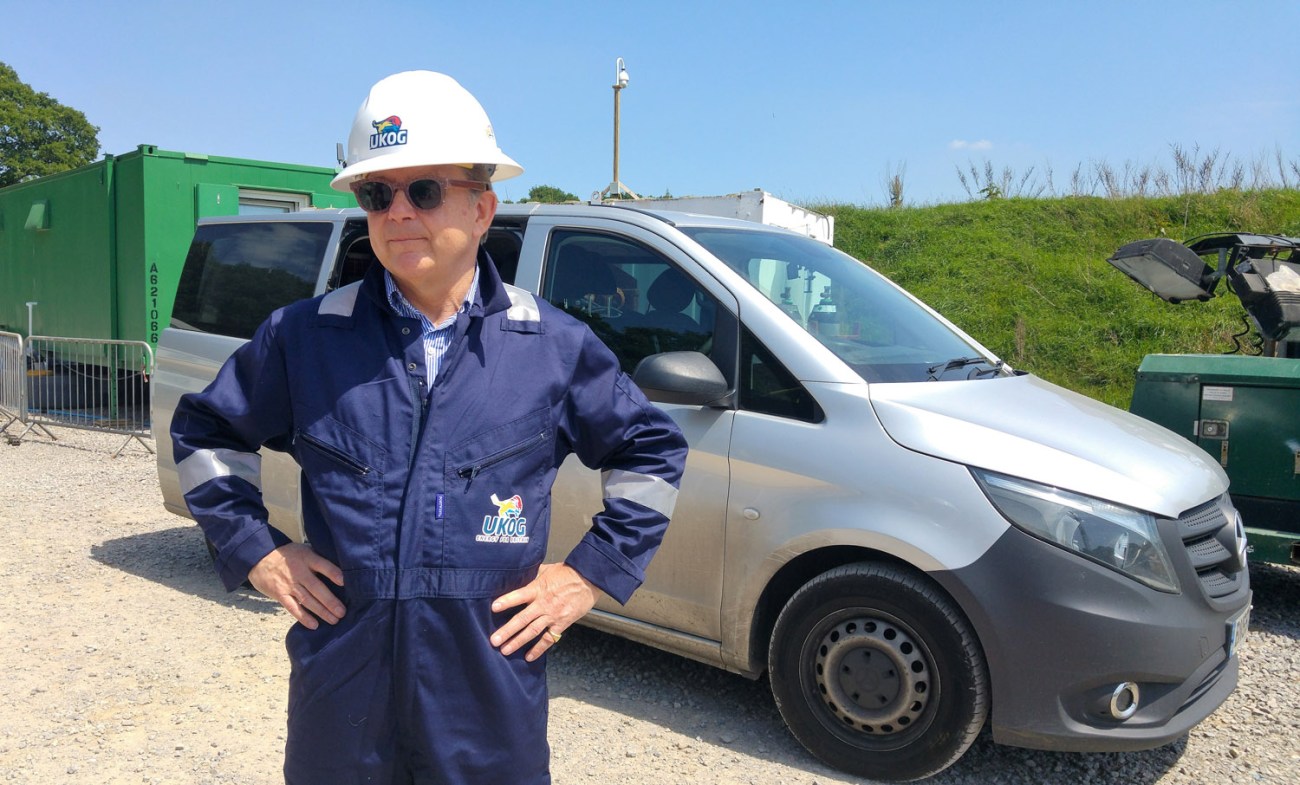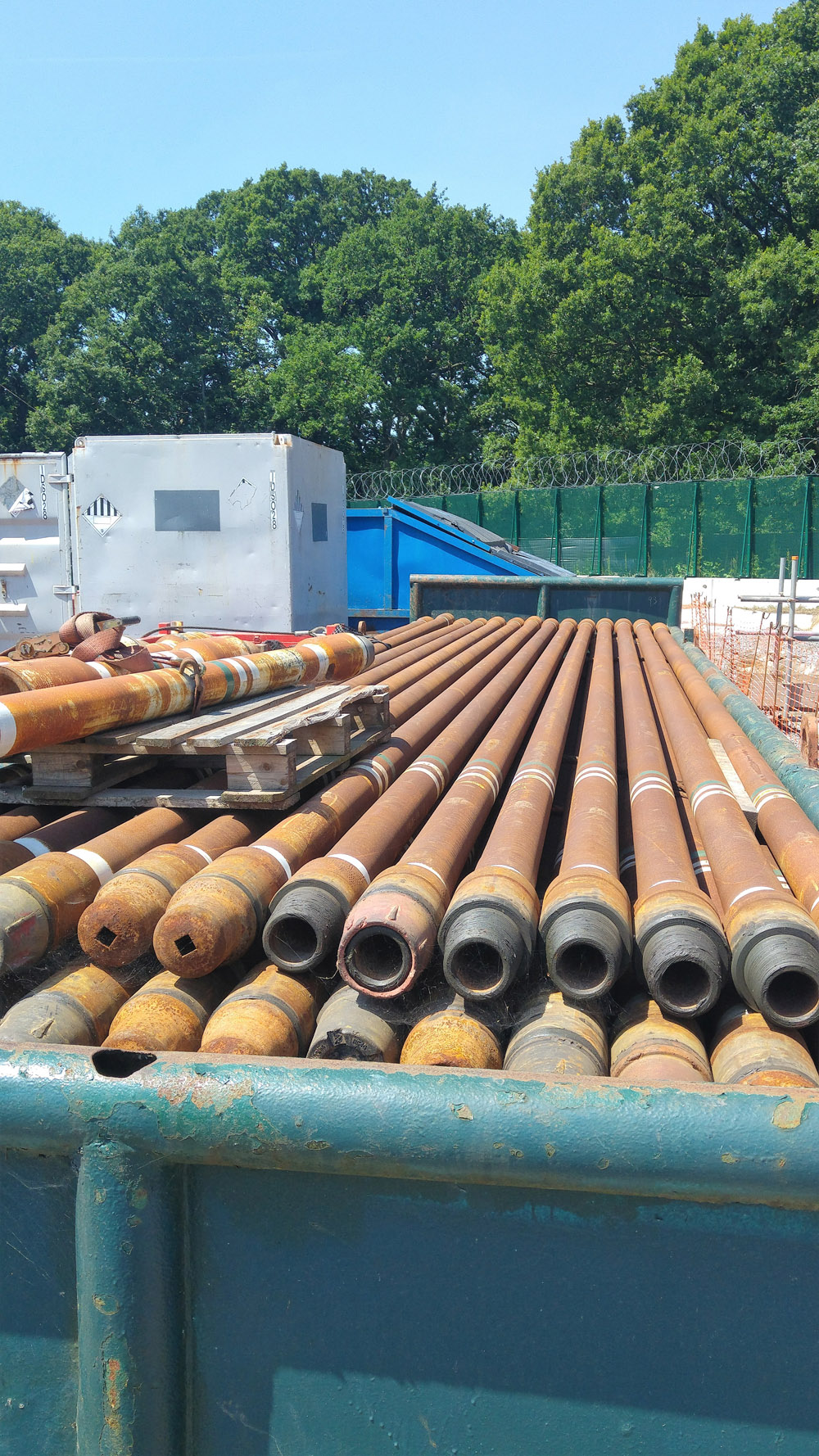
Drilling rig at Broadford Bridge, 14 June 2017. Photo: DrillOrDrop
UKOG has announced that it drilled a mechanical sidetrack to its exploratory oil well at Broadford Bridge in West Sussex, confirming DrillOrDrop’s report published yesterday.
The company made the announcement in a formal RNS statement to investors, 10 days after the 3,000+ft sidetrack was spudded.
DrillOrDrop reported evidence last night of the sidetrack from documents to the Environment Agency (EA) and the Oil and Gas Authority (OGA) public wellbore search.
An amended waste management plan, verified as genuine by the EA, said the sidetrack had been needed for safety reasons because regions of the well had “washed out”.
The news coincides with the final day for comments on a planning application to extend UKOG’s use of the site at Broadford Bridge for another year.
From today’s statement, it appears that the entire Kimmeridge section of the original wellbore, BB-1, where UKOG had reported oil shows, has been permanently abandoned. The flow test planned for another well, at Horse Hill in Surrey, is now being reviewed.
The statement said the sidetrack took five days to drill and went from a depth of 2,613ft down to 5,757ft, making it more than 3,000ft. It mirrored the path of the original borehole, about 200ft away, the statement said.
There is no date in the statement for the sidetrack, but according the OGA’s public wellbore data it was spudded on 29 July 2017.

UKOG executive chairman, Stephen Sanderson. Photo: DrillOrDrop
UKOG executive chairman, Stephen Sanderson, said:
“It became clear that the duration and difficulty of coring such highly-fractured rocks in an inclined hole put the borehole in a less than optimal condition, ultimately jeopardising Kimmeridge flow-test performance.
“Consequently, using the drilling knowledge gained from BB-1, we have delivered BB-1z, consisting of a fresh, undamaged, 1,480 ft thick, intensely fractured Kimmeridge oil-bearing reservoir in optimal condition for flow testing.”
The statement also said sections of the wellbore through the Purbeck exhibited “washout zones”. This made “optimal casing-setting in the full 8 ½” open hole section and resultant Kimmeridge well completion problematic”.
According to the statement:
“Prior to operations start, the original borehole, BB-1, was permanently abandoned with three continuous cement plugs over the entire oil-bearing Kimmeridge section.”
UKOG said the sidetrack was drilled using the same drilling fluid but with a lower density and higher viscosity mixture to “minimise reservoir formation damage”.
“The sidetrack’s in-gauge 8 ½” borehole was cased-off successfully without problem and will now be completed for flow testing.
UKOG said the sidetrack was 200ft to the south of the original borehole. This was said to have been designed “to encounter a potentially higher degree of natural fracturing associated with a nearby significant fault within the Kimmeridge.” Initial indications suggest this had been successful, the statement said.

Photo: DrillOrDrop
The company said
“Significant oil traces were recovered from drilling fluid throughout the Kimmeridge section from 3,622 ft MD to below 5,562 ft MD, a vertical thickness of around 1,400 ft, greater than seen in BB-1. Wet gas shows were at near identical levels to that seen in the original BB-1 borehole.”
UKOG added that the sidetrack provided an opportunity to look at the connectivity of the natural fracturing between the two wells.
“The sidetrack has fulfilled its objective of replicating the geological success of BB-1, via a mirror-image borehole within the Kimmeridge.”
Stephen Sanderson added:
“The sidetrack, BB-1z, is thus a solid investment in the future of the flagship Broadford Bridge discovery and the wider Kimmeridge play.”
According to the statement, permissions had been obtained from the EA, Health and Safety Executive and OGA to drill the sidetrack. It was drilled within the approved “zone of deviation” specified in planning permission from West Sussex County Council.
UKOG said operations were continuing to complete the BB-1z as a potential oil producing well and 14 weeks of flow testing would begin after the rig had been moved off the site. This would be “announced in due course”, the statement said.
“The BB-1 and BB-1z technical learnings also have clear positive implications for the forthcoming Horse Hill flow test, which is now being technically reviewed to include further zones and an increased perforated section.”
Broadford Bridge Action Group said it believed UKOG should obtain more information about the geology of the site before going ahead with flow testing.
A spokesperson for the group said:
“This latest incident indicates that the geology is more complex than they originally suggested and UKOG don’t appear to have all the information they need to be able to assess the risks fully before drilling.
Of course, we want them to stop their operation, but if they are going ahead with flow testing we would urge UKOG to do more detailed surveys of the area to have their eyes wide open to any risks. ”
DrillOrDrop asked UKOG on Wednesday whether it had drilled a sidetrack but it declined to comment. Yesterday we asked the company why it had not referred to the sidetrack in an RNS statement issued on 31 July but it has not responded. This post will be updated with any comment.
Categories: Regulation

Just shows how great the “industrialisation” that the resident objectors didn’t seem to know that this was happening, until it had. Good indication of how unobtrusive such activity can be.
Yep. . on plan, on schedule, on budget, on permissions ☺
“…optimal casing setting….problematic..”. I assume they tried and failed to run the casing; probably hung up on a ledge.
I recall one site (overseas) where a flow test was delayed whilst they “fished” a chunk of metal out of the hole that somebody had let go of at the wrong time!
These things happen, but are controlled.
Surely it’s no surprise that there is highly fractured rock? This is the propensity of UK rock formations is it not?. I am assuming that with our gold standard regulations that the site was 3D surveyed prior to drilling so why were the faults not picked up? Was the surveying technique adequate? Assuming that the EA has many questions it would wish to raise and that the site has been visited by all the bodies concerned?
Most UK rock formations are not fractured.
You’re not going to see fractured rock on 3D seismic (for pedants, yes it is possible)
Fractures are completely different from faults; look at a cliff section and you’ll probably see a fractured layer which is completely unrelated to faulting.
Comment posted on behalf of Marcus Adams:
Re the report on the sidetrack at Broadford Bridge
If I am reading the report correctly, UKOG made an announcement to the stock exchange via RNS, several days after the actual drilling took place. The only reason to make an RNS is because the information is potentially price sensitive and therefore should be made asap. Any investors in UKOG, and particularly anyone who traded in that period potentially have a case against UKOG’s management.
Am sure investors want to see progression, updates and not potential scare mongering. There things take time, teething problems with drilling or casing is no biggie, just part of the course.
Only a case if not side tracked and Unresolved. No need for an RNS.
Hello Ruth.
A case against UKOG for what exactly?
Please can you explain why shareholders in UKOG may have reason to complain.